How to Admire Chinese Classical Gardens
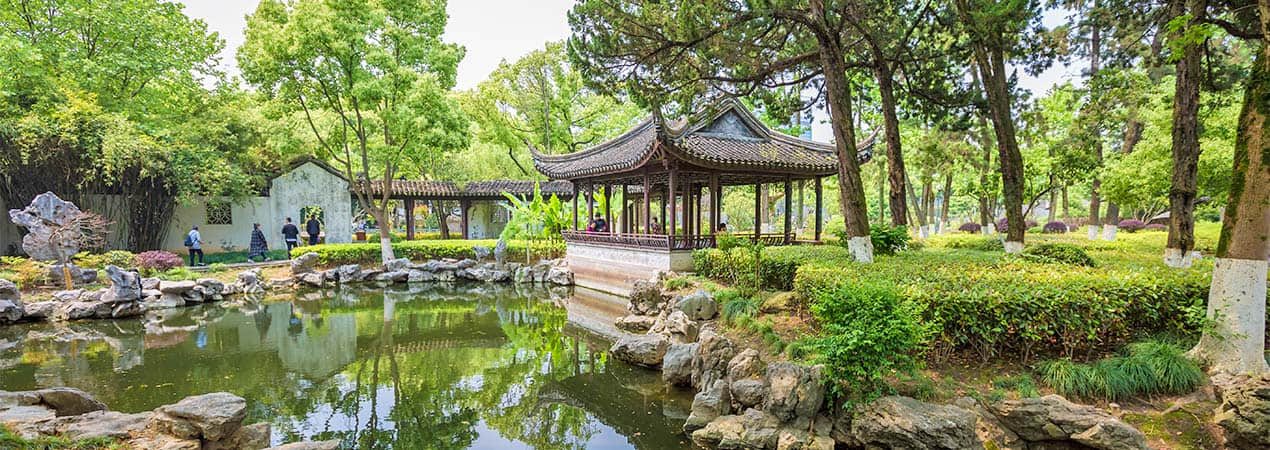
The Chinese garden is an integrated art fusion of nature, buildings, paintings, and calligraphy. Elegant scenery is exquisitely designed with each path.
1. Set up the shelter to arouse curiosity
Rockery, an integral element of the Chinese garden, features strange shape, flowing water, and elegance, and when you enter a classical garden, it is the first thing you see. Pass by the rockery, and the stunning scenery hides behind it.
The doorway is the open gate in a garden wall that acts as a pedestrian passageway to invite exploration. They feature shapes including “quatrefoil”, the “gourd”, “polygon”, “Han Dynasty vase”, and the most common “moon”.
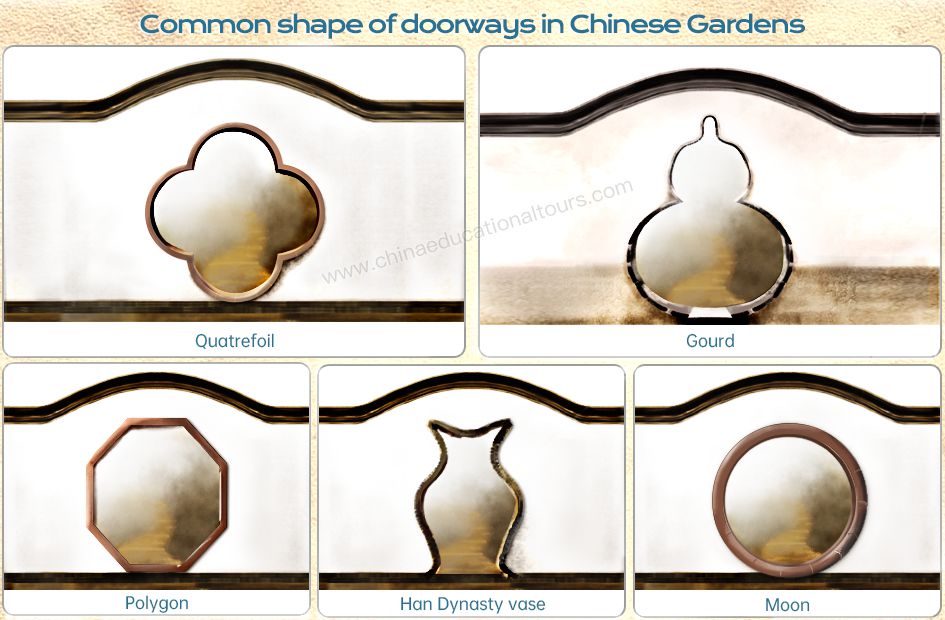
Besides, as an opening in the wall, like a window frame and lattice window, they provide a peek into what’s on the other side. The new look into a garden makes a more elegant atmosphere. Curiosity and thoughts can be aroused by deliberately half obscuring the vista, and inner feelings can be better expressed. Built pavilions and bridges have the same function, to control the scale of the view. In a limited space, it creates a changing and layered view to make the classical garden keep a sense of mystery. The aesthetic taste of implication is the charm of the Chinese garden.
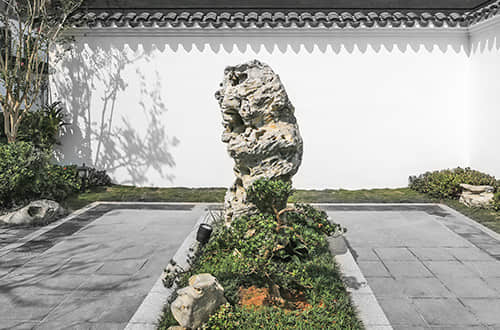
A rockery
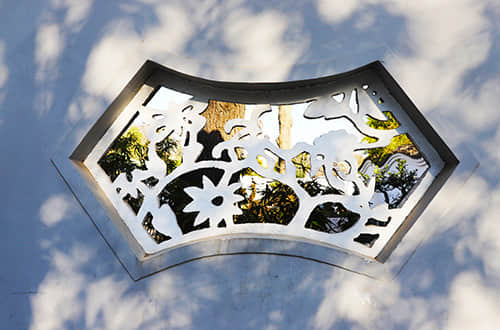
The lattice window
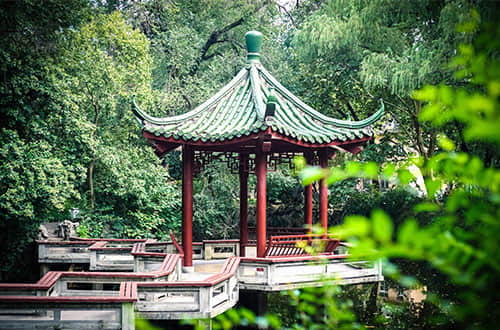
A pavillion
2. Flowing Elements
Space changing
Water elements play an important role in the Chinese garden. Water is essential to nature, and symbolizes life. It can be said that water is the soul of a garden. Many gardens connect distinct sections with a flowing stream, such as small streams, interconnected ponds, or small waterfalls.
The reflective surface of the water helps to create symmetry. A common design for bridges includes a semicircle that becomes a full and perfect circle when matched with its reflection. It also can reflect the ever-changing sky, daylight, plants, and a clear view of mountains in the distance.
Time changing
Time shifts also create picturesque sights, such as a beautiful sunset, rain and shine, time, and season change. Plant growth displays vigor in the garden, exquisite scenery varied with seasons.
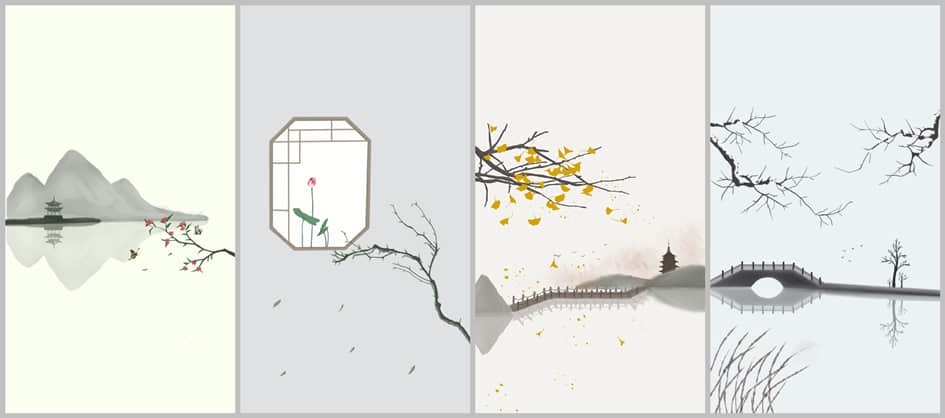
3. Long corridors and Pavilions
A long corridor is a covered walkway with low railings, found in Chinese Gardens, which connects each spot, and has become an important element in the traditional garden, representing the high skill of gardening and artistic aesthetics. Long corridors also play a useful role in providing shade shelter from the sun and the rain.
The long corridors in Chinese gardens can be divided into Hui Lang (winding corridor), Qu Lang (the zigzag corridor), You Lang which links two or more buildings, Hua Lang which is used to display the flowers, and Shui Lang which borders on lakes or goes over ponds.
In the imperial garden, long corridors have colorful decorative painting. Compared to the royal garden, private gardens in the Jiangnan area feature exquisite design, elegance and grace. In the Humble Administrator’s Garden in Suzhou, part of the winding corridor is built over a pond. While in the Lingering Garden, a 600-meter-long corridor connects buildings, pavilions, halls and towers. The corridor is a place for visitors to stop for a rest and admire, and a change of space to direct the route and evoke the visitor’s interest in exploration.
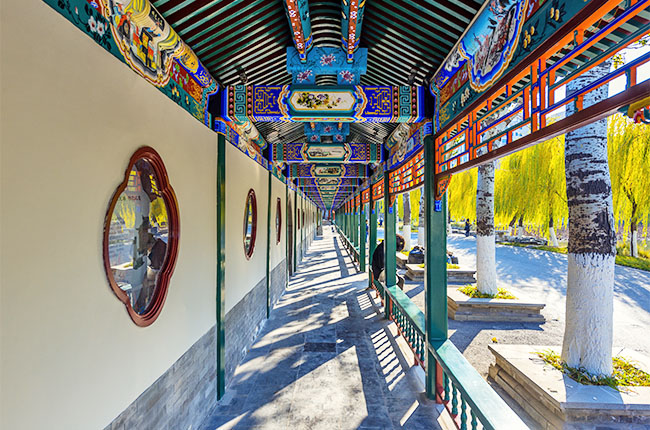
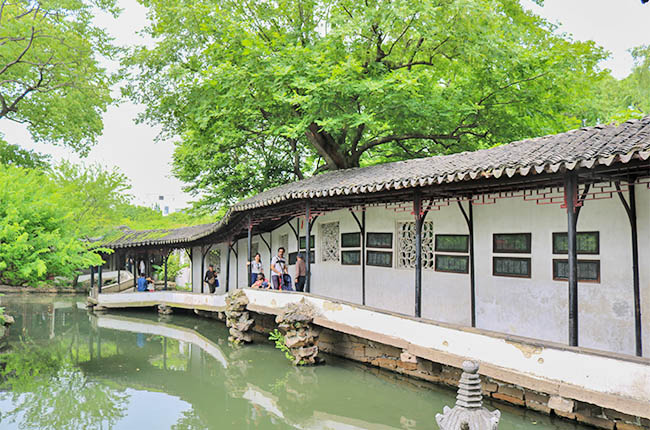
The Chinese Pavilion is normally built with wood, stone or bamboo and may be in the shape of a square, triangle, hexagon, or octagon. The pavilions have columns to support the roof, but no walls, and have several different functions. The wayside pavilion is for rest, and the stele pavilion is built for a stone tablet with engraving that records an important event. They are not only a spot of the Chinese garden but also have observation decks to enjoy the scenery.
4. Plants
Trees and flowers in classical gardens embody essential concepts and artistic beauty. The gardens favor plants which carry profound symbolic meaning.
Pines represent longevity and the struggle for survival. Bamboo symbolizes personal integrity and courtesy. They are planted beside walls and windows. Playing with shadows and light, they create mottled shade on the walls.
Willow trees are commonly placed beside the pools in the gardens, and are a perfect example of a messenger of the wind. The wind blows and the willow leaves sway, which is depicted in Chinese poems and paintings. Chrysanthemum is regarded as symbolic of mental vitality and stands for a strong spirit that could overcome any difficulties.
Lotus flowers are also admired by garden designers and are often chosen for their ornamental value and as a symbol of nobility.
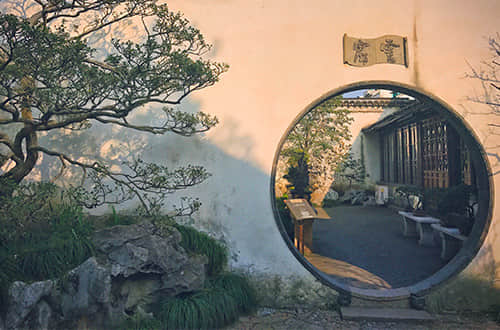
Pines
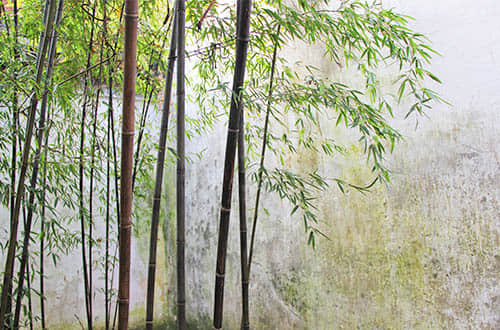
Bamboo
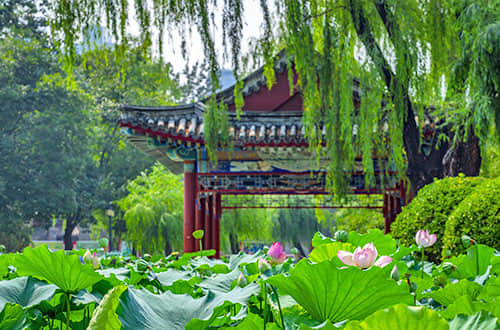
Willow trees and lotus flower
The tree peony embodies aristocracy, wealth, and social status. Initially, it was reserved for the emperor, and then just the richest classes.
The garden plants deliver profound philosophical messages that reflect the ancient Chinese people’s aspiration to harmonize with nature.
5. Borrowed Scenery
Borrowed scenery refers to the principle of “incorporating a background landscape into the composition of a garden”. Borrow the distant mountains, natural views, and buildings to make a wonderful garden.
There are four main types of borrowed scenery.
Distant borrowing focuses on large-scale landscapes such as mountains and lakes.Adjacent borrowing involves neighboring buildings and features.
Upward borrowing encompasses the sky and clouds. And downward borrowing draws on ponds, rocks, even reflection.
The perfect example is the Humble Administrator’s Garden; in the west of the garden is another Qing Dynasty Garden. The designer built a pavilion on the rockery for the best view of the two gardens.
6. Filler
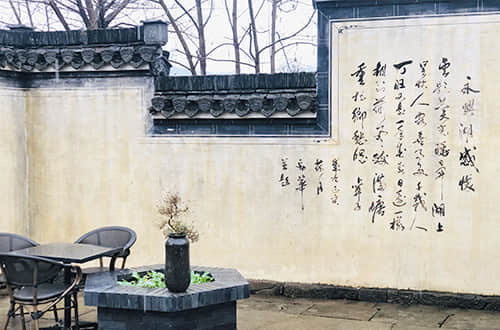
For the garden designer, the house is not only about the estate, but also the habitat of the spirit. Different from Western buildings, Chinese use Chinese characters in architectural decoration. Besides working as directions, inscribed broad, couplets, and tablets are written as calligraphy and literature. Calligraphy works adorn the blank walls to express the residents’ pursuit and personality substance.
Classical Chinese gardens are like elegant poetry, and visitors can find scenery depicted in the ancient poetry of China. Designers delicately make the garden just like the poets polish the words of their poems. The artistic conception of poetry is also in the gardens, which are immortal chants through endless time.

OR
Are you eager to begin your Chinese cultural journey?
Drop us a line and we will promptly connect you with our leading China expert!